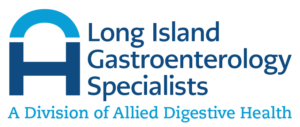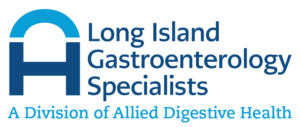Gallstones Treatment
The gallbladder is located on the right side of the abdomen, beneath the liver. It is a pear-shaped organ, in which bile flows from the liver to the gallbladder. The gallbladder holds the bile until it’s required for digestion, and then it releases bile through bile ducts, where it travels to the duodenum (top of the small intestine), which helps break down the fat in food.
However, sometimes cholesterol and bilirubin can build up, causing stones to form in the gallbladder and bile ducts. These stones can cause pain and can lead to other medical problems if there is no gallstone treatment. According to the National Institute of Diabetes and Digestive and Kidney Diseases, approximately 10 to 15 percent of people in the United States have gallstones. Read on to learn more about gallstones, what causes them, and what gallstones treatment options are available.
What Are Gallstones?
Gallstones are objects that appear stone-like. They can form in the gallbladder or common bile ducts. Gallstones can be very large and can change in size dramatically. However, larger stones stay “stuck” in the gallbladder, while the organ tries to release the smaller stones. Sometimes they can get stuck. This is when you may notice symptoms. Many patients have gallstones, and no gallstones treatment is needed because these people with gallstones are asymptomatic. However, when a patient develops symptoms, they should contact their gastroenterologist immediately.
Gallstones can also develop in the common bile duct or other bile ducts, but these are much less common than gallstones in the gallbladder. However, stones that travel into the common bile duct can cause serious complications, such as:
- Cholangitis. Complete blockage of the common bile duct
- Pancreatitis. Inflammation of the pancreas
Types of Gallstones
Two common types of gallstones form in the gallbladder. Gallstones are simply hardened material that forms in the body. The two types of gallstones are:
- Cholesterol gallstones. These are the most common type and are comprised of cholesterol, which is fat in the blood.
- Pigment stones (bilirubin). When red blood cells (RBCs) break down in the liver, pigment gallstones form. If bilirubin leaks into the blood, it can cause jaundice (yellowing of the skin and eyes).
What Are the Symptoms of Gallstones?
The symptoms of gallstones highly depend upon their location and size. Many gallstones are asymptomatic (silent stones), but gallstones can cause noticeable symptoms, particularly pain. Gallstones symptoms include:
- Pain in the right shoulder
- Pain in the upper right or upper mid-abdomen
- Nausea and vomiting
- Chest pain
- Jaundice
- Repeated episodes of pain or other symptoms
Painful attacks affect quality of life greatly but do not pose an immediate medical threat. However, gallstones can cause acute cholecystitis, which is an inflammation of the gallbladder. If you are experiencing severe pain in the upper right quadrant of the abdomen, under the right shoulder, or between the shoulder blades, contact your gastroenterologist immediately.
What Are the Causes of Gallstones?
Researchers still aren’t sure why some patients develop gallstones and some do not. It is thought to be due to a chemical imbalance of bile within the gallbladder. However, there are some probable causes to note:
- Having too much cholesterol
- Too much bilirubin in the bile (this can be caused by liver disease or blood disorders)
- A full gallbladder; if the gallbladder is unable to empty the bile, stones will form
However, behind these causes, there are certain risk factors to be mindful of.
What Are the Risk Factors for Gallstones?
The risk for gallstones is much higher in some patients. These high risks include:
- Being overweight or obese
- Those with Crohn’s disease
- Being a woman
- Having a family history of gallstones
- Eating a high-fat diet (cholesterol)
- Having diabetes
- Some medications, including oral contraceptives
- Being of Mexican or Native American descent
- Being 40 or over
- Rapid weight loss/new diet
- Taking drugs that lower your cholesterol
Those who lose weight suddenly as part of a new diet or those who are planning weight loss surgery are also at higher risk for developing gallstones.
When to See a Doctor for Your Gallstones
If you’re experiencing noticeable symptoms or suspect you may have gallstones, you should consult your gastroenterologist as soon as possible. While many times gallstones aren’t serious, in some cases they can lead to gallbladder cancer, gallbladder disease, and other complications. To provide you with gallstone treatment, you need a formal diagnosis. Your doctor may run diagnostic tests, such as:
- Endoscopic retrograde cholangiopancreatography (ERCP). This is an endoscopic treatment in which a long, flexible tube is inserted into the mouth, and down to the small intestine. A video camera is attached to give the doctor mainly a view of your bile ducts. If stones are found in the bile ducts, ERCP can remove them. However, ERCP cannot remove stones in the gallbladder.
- Magnetic resonance cholangiopancreatography (MRCP). MRI is used to examine the bile ducts. This is less invasive than ERCP, so it is often the first-line diagnostic.
- Endoscopic ultrasound (EUS). This combines ultrasound and endoscopy to see if stones are present. If stones are found in the bile duct, ERCP may be used.
If you receive a diagnosis and need treatment, there are several treatment options available for gallstones. If you have “silent stones,” they do not require treatment. There are many nonsurgical treatments. In severe cases, however, patients may need surgery to remove the gallbladder. Some treatment options include:
- Extracorporeal shock wave lithotripsy (ESWL). This procedure uses shock waves to remove small stones. Provided that your gallbladder is functioning properly, this is a viable option.
- Laparoscopic cholecystectomy. This is a minimally invasive surgical procedure that uses laparoscopy to remove your gallbladder. A small incision is made, and your gallbladder is viewed on a screen via a tiny camera. Then, another small incision is made to remove the gallbladder.
- Ursodiol. This is a medication used to dissolve gallstones. It is an alternative to other procedures. It also is used in those who are preparing for weight loss surgery to help prevent gallstones from forming.
Schedule a Consultation with a Gastroenterologist
If you are experiencing pain or symptoms related to gallstones, you may need gallstones treatment. To schedule a consultation with an experienced gastroenterologist, you can contact any of Allied Digestive Health’s care centers here. We offer compassionate and comprehensive care for all of your gastrointestinal needs.


